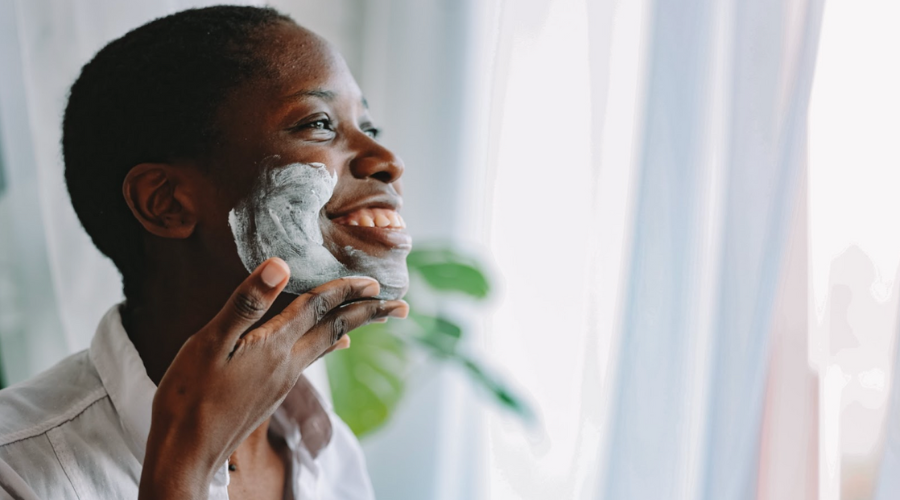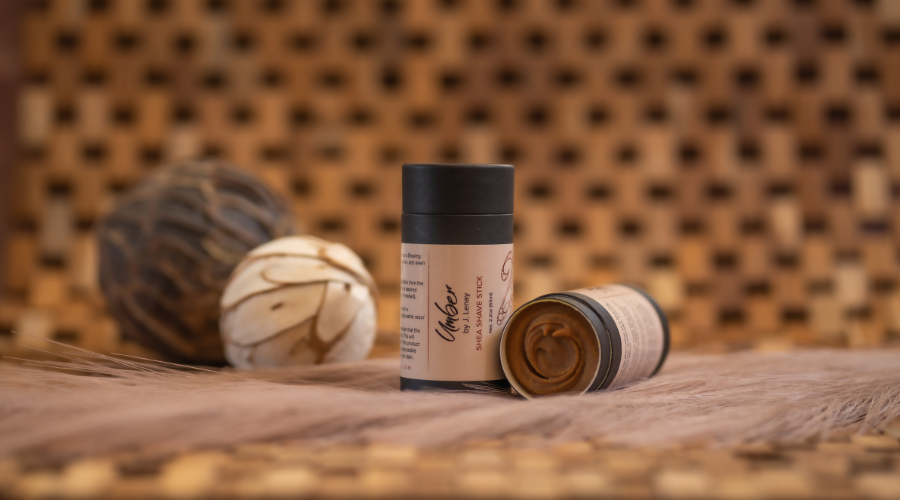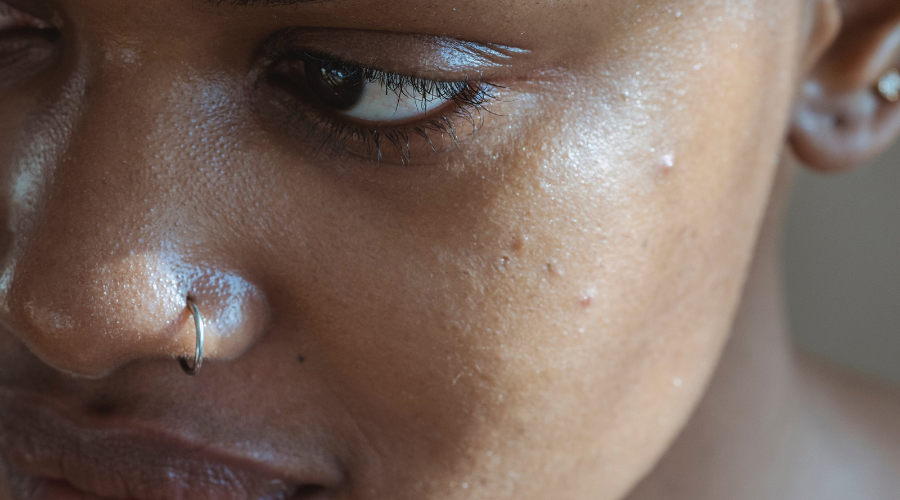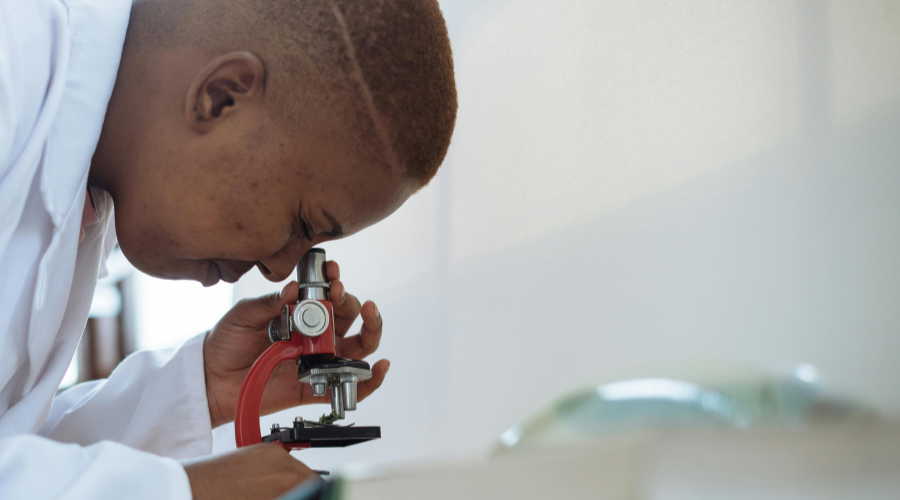You know those annoying bumps that pop up on your face after shaving? Yeah, those suck. But don’t worry, we’ve got your back. Ingrown hairs happen when freshly shaved hair gets trapped under your skin, but they don’t have to be a part of your daily routine.
This article will teach you how to prevent and treat ingrown hairs on your face so you can kiss those bumps goodbye for good. We’ll cover tips for shaving properly, exfoliating, and using products like our favorite shea butter stick to stop ingrowns in their tracks. With a few simple tweaks to your routine, you can have smooth, bump-free skin. So say “see ya” to irritation and “hello” to confidence. Let’s get started!
What Causes Ingrown Hairs on the Face?
Ingrown hairs happen when your hair curls back into the skin instead of growing out. On the face, ingrown hairs are often caused by shaving, waxing or hair removal. Shaving removes hair at the surface, cutting it off at an angle. This can lead the pointed end of the hair to pierce the skin and curl inward. Shaving with a dull razor or in the wrong direction also increases the ingrown hair risk.
Dead skin buildup
As dead skin cells flake off, they can trap hair follicles underneath. The hair then has no choice but to grow sideways under the skin. Exfoliating removes this dead layer and clears the path for hair to grow out properly.
Naturally curly hair
Those with naturally coarse or curly hair tend to get more ingrown hairs. The curly hair is more likely to bend and embed itself into the skin. Tightly curled facial hair in particular, like beards, sideburns, or mustaches, can lead to frequent ingrown hairs.
Clogged hair follicles
Oil, dirt, and bacteria buildup can clog hair follicles and prevent hair from breaking through the skin. Keeping your face clean and oil-free, especially after hair removal, helps prevent blockages and clear the way for hair to grow out unencumbered.
The good news is there are several ways to prevent and treat ingrown hairs. Exfoliating, moisturizing, using over-the-the-counter creams and avoiding hair removal methods that cut too closely to the skin can help stop ingrown hairs in their tracks. If you do get an ingrown hair, applying a warm compress, sterilized tweezers and aftercare creams will help eliminate the problem and avoid infection.
How to Prevent Ingrown Hairs When Shaving
Shaving too closely is one of the top causes of ingrown hairs, so take it slow and be gentle. Use a clean, sharp razor and shave in the direction of hair growth, not against it. Rinsing your razor frequently under warm water will also help.
Exfoliate First
Exfoliating removes dead skin cells and unclogs hair follicles, allowing hairs to grow in freely. Gently scrub your face with a facial exfoliant or mild scrub 1-2 times a week, especially before shaving. An exfoliant containing salicylic or glycolic acid works well for ingrown hair prevention.
Shave After Showering
Showering or washing your face in warm water before shaving will soften the hair and open up pores, allowing for a closer shave. The hair will be more pliable, lessening the chance of hairs breaking off and becoming ingrown.
Use A Shaving Gel or Cream
Apply a liberal amount of shaving gel, cream, or oil and let it sit on your skin for 2-3 minutes to thoroughly soften the hair. This allows the razor to glide more easily, reducing pulling and tugging. Products containing hydrating ingredients like glycerin, jojoba oil, or shea butter are ideal.
Rinse and Moisturize
Rinse your face with lukewarm water after shaving and pat dry gently with a towel. Apply a lightweight moisturizer to hydrate skin and soothe irritation. Look for a moisturizer containing hydrating and soothing ingredients like hyaluronic acid, aloe vera, chamomile, or lavender.
Following these tips will help you kiss bumpy, ingrown hairs goodbye and achieve smooth, bump-free skin. Be patient and consistent, and your ingrown hair problem should clear up in no time.

Treat Existing Ingrown Hairs and Razor Bumps
Once those pesky ingrown hairs and razor bumps appear, it’s time to take action. Here are some tips to treat existing bumps and prevent future ones from forming.
Exfoliate the Area
Exfoliation removes dead skin cells from the surface of your skin. Use a facial scrub, chemical exfoliants like glycolic acid, or facial brush to slough off the layer of skin covering the ingrown hair. This will free the trapped hair and allow it to grow out properly. Exfoliate the area 2-3 times a week until the bump clears up.
Apply a Warm Compress
The heat from a warm compress will help soften the skin and open up the pores, allowing the ingrown hair to emerge. Soak a washcloth in warm water and hold it against the affected area for 10-15 minutes a few times a day. The ingrown hair should pop out on its own in a few days.
Use Tweezers to Extract the Hair
If the ingrown hair is visible under the skin, you may need to extract it with a pair of sterilized tweezers. Gently tease one end of the hair out of the skin and pull it out slowly and evenly. Be very careful not to break the hair. Extracting the hair will provide immediate relief from irritation, but you’ll still need to exfoliate and moisturize to prevent the ingrown hair from returning.
Apply a Topical Treatment
Products containing glycolic or salicylic acid help dry out and remove dead skin cells while moisturizing and soothing the skin. Apply a treatment containing one of these ingredients directly to the ingrown hair 3 times a day to reduce redness and bumpiness. Look for creams, gels, or stick formulas that contain at least 2% glycolic acid or 0.5% salicylic acid.
Moisturize Daily
Keep the area well hydrated to soften skin and hair follicles. Apply a fragrance-free moisturizer daily, especially after shaving or waxing. A cream containing hydrating hyaluronic acid and soothing aloe vera, like the Shea Butter Stick featured, works well for ingrown hair-prone skin. Keeping skin moisturized daily will help prevent future ingrown hairs from forming.

Soothe Irritation With Natural Shea Butter
Shea butter is well known for its moisturizing and soothing properties. It contains fatty acids that help reduce inflammation and redness. Applying shea butter stick directly to ingrown hairs and razor bumps can help relieve irritation and promote healing.
Hydrate and Protect Skin
The rich shea butter formula hydrates the skin and forms a protective barrier. This helps shield sensitive areas from environmental damage and prevents excess dryness. The moisturizing effects also soften the hair and skin, making ingrown hairs easier to release.
Reduce Swelling and Redness
Shea butter has natural anti-inflammatory effects. It helps take down swelling caused by ingrown hairs and razor burn. The cool, creamy shea butter also has a calming effect that can relieve redness. Its healing properties may speed up recovery from post-shave irritation and promote skin restoration.
Release Trapped Hairs
The emollient shea butter helps loosen the skin and unclog hair follicles. This can allow trapped ingrown hairs to break through the surface. The lubricating effects also make hairs glide more easily under the skin, preventing them from becoming ingrown in the first place.
Soothing, Natural Formula
A shea butter stick provides targeted relief using only natural ingredients. It is free from harsh chemicals, fragrances, parabens and other irritants that can further aggravate sensitive skin. The simple, botanical formula is suitable for all skin types, including those prone to razor bumps and ingrown hairs.
In summary, a shea butter stick is an ideal post-shave solution. It works to prevent and relieve ingrown hairs by moisturizing the skin, reducing inflammation, releasing trapped hairs and speeding healing. The natural, soothing formula can help kiss bumps goodbye and keep your face smooth and irritation-free.
FAQs About Using a Shea Butter Stick for Ingrown Hairs
How often should I use the shea butter stick?
Using the shea butter stick 2-3 times a day is ideal for preventing and treating ingrown hairs. Gently glide the stick over areas where ingrown hairs tend to form, especially after shaving or waxing. The shea butter will soften the hair and moisturize the area, allowing hairs to grow in uncurled. For existing ingrown hairs, apply the stick 3-4 times a day to help loosen the hair and reduce inflammation.
Can the shea butter stick be used on sensitive skin?
Absolutely. Shea butter is excellent for sensitive skin and will not irritate or clog pores. It is a natural product derived from the shea nut that is rich in fatty acids, which nourish and soothe the skin. The stick is formulated without harsh chemicals, fragrances, or dyes. Test the stick on a small area of skin first if you have a known sensitivity or allergy to shea butter.
Are there any side effects to using the shea butter stick?
When used as directed, the shea butter stick is very safe and unlikely to cause any side effects. The ingredients are all-natural and non-toxic. However, as with any product, there is a small risk of an allergic reaction in some individuals, especially those with a shea nut allergy. Discontinue use if you experience skin rash, itching, redness or other signs of irritation or allergy. See a dermatologist if the reaction is severe.
How long does one shea butter stick last?
One shea butter stick will typically last around 4 to 6 weeks with regular use 2-3 times a day. The exact time will depend on the size of the area you are treating and the severity of your ingrown hairs. For the best results, it is recommended to replace your shea butter stick every 1-2 months. Always check that the stick remains soft and creamy—if it gets very hard, it is time to replace it. Properly stored, an unopened shea butter stick will last up to 1 year.
You’ve got the tools now to say goodbye to those pesky ingrown hairs for good. Just remember to exfoliate regularly, shave properly, and apply products like that shea butter stick afterwards to soothe irritation. It may take some trial and error to find the right routine for your skin, but don’t get discouraged. With a little time and TLC, you’ll get your skin back to smooth sailing. And you can finally go bump-free, ready to take on the day with confidence. So grab that new razor, get your exfoliating scrub, and let’s start this journey to clear, healthy skin. You’ve got this!



